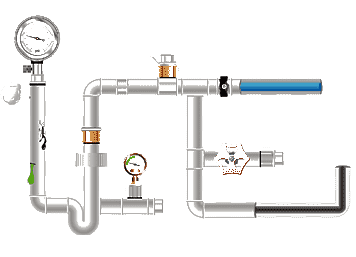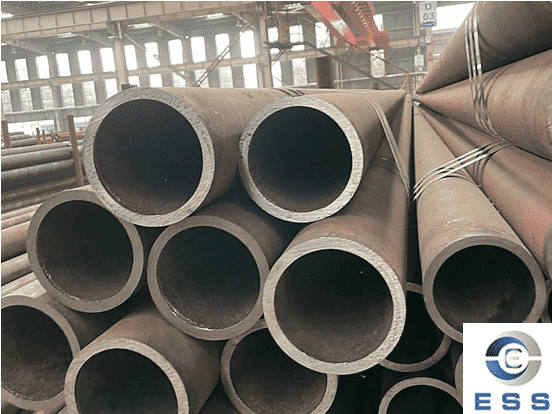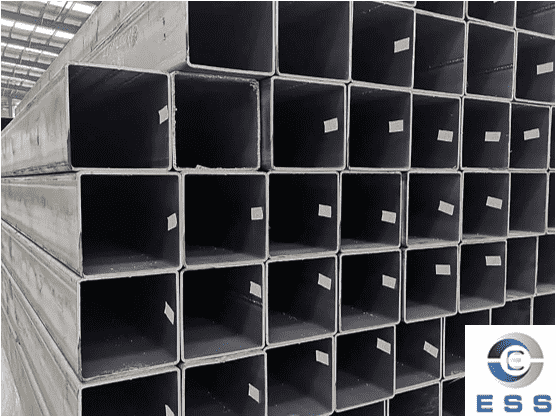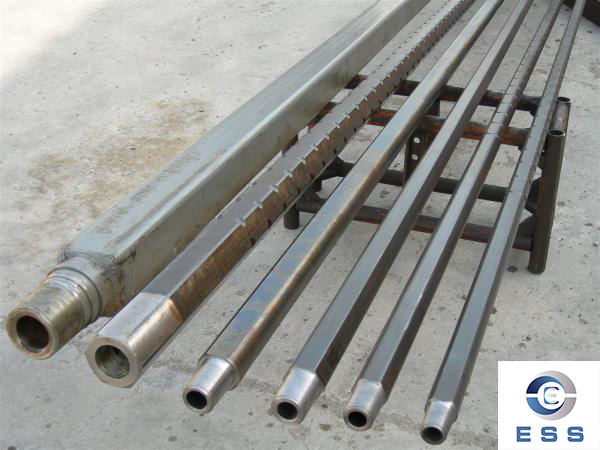
Drilling pipe is a type of octg pipe,which are most of the seamless steel pipes.The size of the drill pipe includes its length, diameter, unit weight, and thick form. These sizes are essential for the function and applicability of the drill pipe.
The length of the drill pipe
The length of the drill pipe usually refers to its total length. According to the API (American Petroleum Society), the length of the drill pipe can be divided into several different range. The specific length classification is as follows:
The first category: 5.486 meters to 6.706 meters (18 feet to 22 feet).
The second category (commonly used): 8.230 meters to 9.144 meters (27 feet to 30 feet).
The third category: 11.582 meters to 13.716 meters (38 feet to 45 feet).
These lengths enable drill pipes to meet different depth drilling needs. The inner diameter, unit weight and other technical parameters of the drill pipe are part of its size specifications.
Diameter of drill pipe
Drilling pipe is a tool for oil drilling. The diameter of the drilling pipe is an important aspect of its size. It is one of the very important parameters in the drill. The larger the diameter, the stronger the drill efficiency and the bearing capacity. The diameter of the drill pipe generally has the following standards:
1. British drill pipe diameter standard
The diameter standard of the British pipe is a relatively common type. Its unit is inch (INCH). The common diameter is: 2 3/8 inches, 27/8 inches, 3 1/2 inch, 4 inches, 4 1/2 Inch, 5 inches, etc. These sizes of drilling pipes are widely used in oil drilling because they can meet the needs of different well depths and drilling missions.
2. Public drill pipe diameter standard
The diameter standard of the public drill pipe refers to the standards of millimeters (mm) in diameter. The more common diameters are: 60mm, 73mm, 89mm, 102mm, 114mm, 127mm, etc.
The unit weight of the drill pipe
The unit weight of the drill pipe refers to the weight of each feet or a drill pipe. This parameter is very important for the design and planning of drilling operations. According to the API standard, the unit weight of the drill pipe can be determined according to its outer diameter and wall thickness. The unit weight of the drilling pipe can be calculated through the formula, and the specific formulas and parameters may change according to different standards and manufacturers.
In the API 5DP standard, the unit weight (WDP) of the drill pipe is usually provided by pounds per feet (LB/FT). For example, for the drill pipes of certain specifications, the unit weight may be as follows:
A. 2-3/8-inch drill pipe, the unit weight may be 7.02 pounds per feet.
B. 4 -inch drilling pipe, the unit weight may be 15.91 pounds per feet.
In addition, the specifications of the drill pipe also include a thick form, which are commonly used: internal thickness, external thickness, and thick inside and outside. These thickened forms help enhance the structural strength of the drill pipe and improve their use of use under extreme conditions.
The thickened form of the drill pipe
The thickness of the drill pipe mainly refers to the thickened method of the drill pipe tube. This thickened design is to improve the connection strength of the drill pipe joint. According to the API standard, the thick form of the drill pipe joint is usually divided into the following:
Internal thickness: The drill pipe of this form is thickened at the interior to adapt to the inner diameter size of the drill pipe joint. The inner thick drill pipe usually has the characteristics of the same diameter and the slightly resistance of the drilling fluid, but the outer diameter is large and easy to wear.
External thickening: Compared with the inside thickening, the external thickened drilling pipe is thickened at the external end. This form of drilling pole tube increases the wall thickness of the tube on the joint part. The outer diameter is greater than the outer diameter of the tube, which can enhance the connection strength of the joint and reduce wear.
Internal and external thickening: The drill pipe of this form is thickened at both ends, with both internal thickening and thickness. This design can provide a higher connection intensity and apply to a higher drilling operating environment
Each thick form has its specific application scenarios and advantages. Which form to choose depends on the specific drill operation requirements and the design standards of the drill pipe.
The size of the drilling rod is very important for the construction of deep wells, horizontal and large shifts during oil and gas exploration and development. They need to choose the appropriate specifications according to specific operating needs.
Drill pipe sizes chart
|
Pipe
|
Tool Joint
|
|
Size OD,
in.
|
Nominal Weight,
lb/ft
|
Upset Type
|
Grade
|
Wall Thickness,
in.
|
ID,
in.
|
Connection Type
|
OD,
in.
|
ID,
in.
|
Pin Tong Space*,
in.
|
Box Tong Space*,
in.
|
|
2-3/8
|
6.65
|
EU
|
E-75
|
0.280
|
1.815
|
NC26
|
3-3/8
|
1-3/4
|
9
|
10
|
|
X-95
|
0.280
|
1.815
|
NC26
|
3-3/8
|
1-3/4
|
9
|
10
|
|
G-105
|
0.280
|
1.815
|
NC26
|
3-3/8
|
1-3/4
|
9
|
10
|
|
S-135
|
0.280
|
1.815
|
NC26
|
3-5/8
|
1-3/4
|
9
|
10
|
|
2-7/8
|
10.40
|
EU
|
E-75
|
0.362
|
2.151
|
NC31
|
4-1/8
|
2-1/8
|
9
|
11
|
|
X-95
|
0.362
|
2.151
|
NC31
|
4-1/8
|
2
|
9
|
11
|
|
G-105
|
0.362
|
2.151
|
NC31
|
4-1/8
|
2
|
9
|
11
|
|
S-135
|
0.362
|
2.151
|
NC31
|
4-3/8
|
1-5/8
|
9
|
11
|
|
3-1/2
|
13.30
|
EU
|
E-75
|
0.368
|
2.764
|
NC38
|
4-3/4
|
2-11/16
|
10
|
12-1/2
|
|
X-95
|
0.368
|
2.764
|
NC38
|
5
|
2-9/16
|
10
|
12-1/2
|
|
G-105
|
0.368
|
2.764
|
NC38
|
5
|
2-7/16
|
10
|
12-1/2
|
|
S-135
|
0.368
|
2.764
|
NC38
|
5
|
2-1/8
|
10
|
12-1/2
|
|
15.50
|
EU
|
E-75
|
0.449
|
2.602
|
NC38
|
5
|
2-9/16
|
10
|
12-1/2
|
|
X-95
|
0.449
|
2.602
|
NC38
|
5
|
2-7/16
|
10
|
12-1/2
|
|
G-105
|
0.449
|
2.602
|
NC38
|
5
|
2-1/8
|
10
|
12-1/2
|
|
S-135
|
0.449
|
2.602
|
NC40
|
5-1/2
|
2-1/4
|
9
|
12
|
|
4
|
14.00
|
IU
|
E-75
|
0.330
|
3.340
|
NC40
|
5-1/4
|
2-13/16
|
9
|
12
|
|
X-95
|
0.330
|
3.340
|
NC40
|
5-1/4
|
2-11/16
|
9
|
12
|
|
G-105
|
0.330
|
3.340
|
NC40
|
5-1/2
|
2-7/16
|
9
|
12
|
|
S-135
|
0.330
|
3.340
|
NC40
|
5-1/2
|
2-7/16
|
9
|
12
|
|
EU
|
E-75
|
0.330
|
3.340
|
NC46
|
6
|
3-1/4
|
9
|
12
|
|
X-95
|
0.330
|
3.340
|
NC46
|
6
|
3-1/4
|
9
|
12
|
|
G-105
|
0.330
|
3.340
|
NC46
|
6
|
3-1/4
|
9
|
12
|
|
S-135
|
0.330
|
3.340
|
NC46
|
6
|
3
|
9
|
12
|
|
15.70
|
IU
|
E-75
|
0.380
|
3.240
|
NC40
|
5-1/4
|
2-11/16
|
9
|
12
|
|
X-95
|
0.380
|
3.240
|
NC40
|
5-1/4
|
2-7/16
|
9
|
12
|
|
G-105
|
0.380
|
3.240
|
NC40
|
5-1/2
|
2-7/16
|
9
|
12
|
|
S-135
|
0.380
|
3.240
|
NC40
|
5-1/2
|
2
|
9
|
12
|
|
EU
|
E-75
|
0.380
|
3.240
|
NC46
|
6
|
3-1/4
|
9
|
12
|
|
X-95
|
0.380
|
3.240
|
NC46
|
6
|
3-1/4
|
9
|
12
|
|
G-105
|
0.380
|
3.240
|
NC46
|
6
|
3-1/4
|
9
|
12
|
|
S-135
|
0.380
|
3.240
|
NC46
|
6
|
3
|
9
|
12
|
|
4-1/2
|
16.60
|
IEU
|
E-75
|
0.337
|
3.826
|
NC46
|
6-1/4
|
3
|
9
|
12
|
|
X-95
|
0.337
|
3.826
|
NC46
|
6-1/4
|
3-1/4
|
9
|
12
|
|
G-105
|
0.337
|
3.826
|
NC46
|
6-1/4
|
3
|
9
|
12
|
|
S-135
|
0.337
|
3.826
|
NC46
|
6-1/4
|
2-3/4
|
9
|
12
|
|
EU
|
E-75
|
0.337
|
3.826
|
NC50
|
6-5/8
|
3-3/4
|
9
|
12
|
|
X-95
|
0.337
|
3.826
|
NC50
|
6-5/8
|
3-3/4
|
9
|
12
|
|
G-105
|
0.337
|
3.826
|
NC50
|
6-5/8
|
3-3/4
|
9
|
12
|
|
S-135
|
0.337
|
3.826
|
NC50
|
6-5/8
|
3-1/2
|
9
|
12
|
|
20.00
|
IEU
|
E-75
|
0.430
|
3.640
|
NC46
|
6-1/4
|
3
|
9
|
12
|
|
X-95
|
0.430
|
3.640
|
NC46
|
6-1/4
|
2-3/4
|
9
|
12
|
|
G-105
|
0.430
|
3.640
|
NC46
|
6-1/4
|
2-1/2
|
9
|
12
|
|
S-135
|
0.430
|
3.640
|
NC46
|
6-1/4
|
2-1/4
|
9
|
12
|
|
EU
|
E-75
|
0.430
|
3.640
|
NC50
|
6-5/8
|
3-5/8
|
9
|
12
|
|
X-95
|
0.430
|
3.640
|
NC50
|
6-5/8
|
3-1/2
|
9
|
12
|
|
G-105
|
0.430
|
3.640
|
NC50
|
6-5/8
|
3-1/2
|
9
|
12
|
|
S-135
|
0.430
|
3.640
|
NC50
|
6-5/8
|
3
|
9
|
12
|
|
5
|
19.50
|
IEU
|
E-75
|
0.362
|
4.276
|
NC50
|
6-5/8
|
3-3/4
|
9
|
12
|
|
X-95
|
0.362
|
4.276
|
NC50
|
6-5/8
|
3-1/2
|
9
|
12
|
|
G-105
|
0.362
|
4.276
|
NC50
|
6-5/8
|
3-1/4
|
9
|
12
|
|
S-135
|
0.362
|
4.276
|
NC50
|
6-5/8
|
2-3/4
|
9
|
12
|
|
E-75
|
0.362
|
4.276
|
5-1/2 FH
|
7
|
3-3/4
|
10
|
12
|
|
X-95
|
0.362
|
4.276
|
5-1/2 FH
|
7
|
3-3/4
|
10
|
12
|
|
G-105
|
0.362
|
4.276
|
5-1/2 FH
|
7
|
3-3/4
|
10
|
12
|
|
S-135
|
0.362
|
4.276
|
5-1/2 FH
|
7-1/4
|
3-1/2
|
10
|
12
|
|
25.60
|
IEU
|
E-75
|
0.500
|
4.000
|
NC50
|
6-5/8
|
3-1/2
|
9
|
12
|
|
X-95
|
0.500
|
4.000
|
NC50
|
6-5/8
|
3
|
9
|
12
|
|
G-105
|
0.500
|
4.000
|
NC50
|
6-5/8
|
2-3/4
|
9
|
12
|
|
S-135
|
0.500
|
4.000
|
NC50
|
6-5/8
|
2-3/4
|
9
|
12
|
|
E-75
|
0.500
|
4.000
|
5-1/2 FH
|
7
|
3-1/2
|
10
|
12
|
|
X-95
|
0.500
|
4.000
|
5-1/2 FH
|
7
|
3-1/2
|
10
|
12
|
|
G-105
|
0.500
|
4.000
|
5-1/2 FH
|
7-1/4
|
3-1/2
|
10
|
12
|
|
S-135
|
0.500
|
4.000
|
5-1/2 FH
|
7-1/4
|
3-1/4
|
10
|
12
|
|
5-1/2
|
21.90
|
IEU
|
E-75
|
0.361
|
4.778
|
5-1/2 FH
|
7
|
4
|
10
|
12
|
|
X-95
|
0.361
|
4.778
|
5-1/2 FH
|
7
|
3-3/4
|
10
|
12
|
|
G-105
|
0.361
|
4.778
|
5-1/2 FH
|
7-1/4
|
3-1/2
|
10
|
12
|
|
S-135
|
0.361
|
4.778
|
5-1/2 FH
|
7-1/2
|
3
|
10
|
12
|
|
24.70
|
IEU
|
E-75
|
0.415
|
4.670
|
5-1/2 FH
|
7
|
4
|
10
|
12
|
|
X-95
|
0.415
|
4.670
|
5-1/2 FH
|
7-1/4
|
3-1/2
|
10
|
12
|
|
G-105
|
0.415
|
4.670
|
5-1/2 FH
|
7-1/4
|
3-1/2
|
10
|
12
|
|
S-135
|
0.415
|
4.670
|
5-1/2 FH
|
7-1/2
|
3
|
10
|
12
|
|
6-5/8
|
25.20
|
IEU
|
E-75
|
0.330
|
5.965
|
6-5/8 FH
|
8
|
5
|
10
|
13
|
|
X-95
|
0.330
|
5.965
|
6-5/8 FH
|
8
|
5
|
10
|
13
|
|
G-105
|
0.330
|
5.965
|
6-5/8 FH
|
8-1/4
|
4-3/4
|
10
|
13
|
|
S-135
|
0.330
|
5.965
|
6-5/8 FH
|
8-1/2
|
4-1/4
|
10
|
13
|
|
27.70
|
IEU
|
E-75
|
0.362
|
5.901
|
6-5/8 FH
|
8
|
5
|
10
|
13
|
|
X-95
|
0.362
|
5.901
|
6-5/8 FH
|
8-1/4
|
4-3/4
|
10
|
13
|
|
G-105
|
0.362
|
5.901
|
6-5/8 FH
|
8-1/4
|
4-3/4
|
10
|
13
|
|
S-135
|
0.362
|
5.901
|
6-5/8 FH
|
8-1/2
|
4-1/4
|
10
|
13
|
Summary
In summary, the size of the drill pipe is the key factor of its design and performance, including length, diameter, and thick form. These parameters jointly determine the application efficiency and safety of drill pipes in petroleum drilling and other related fields.
Read more: Introduction of XT39 Drill Pipe or How Many Types of Drill Pipe Threads Are There?









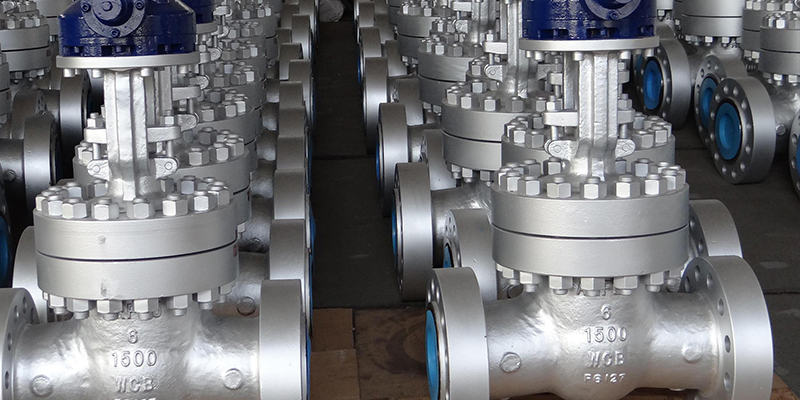
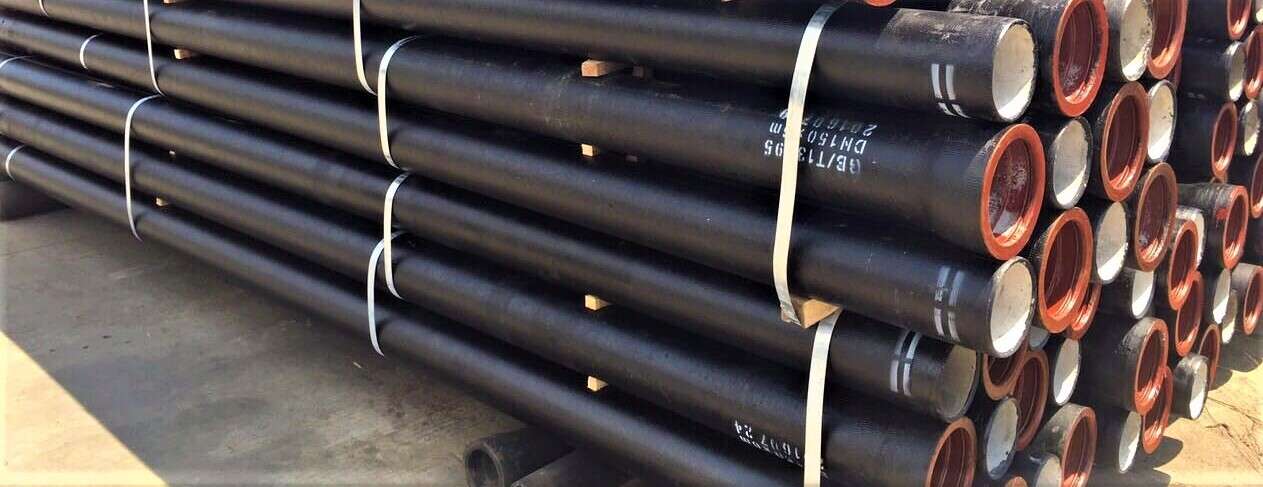


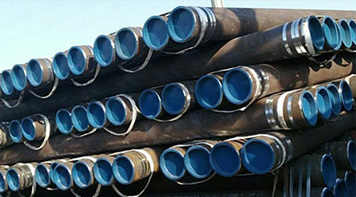 Eastern Steel Manufacturing Co.,Ltd not only improve product production and sales services, but also provide additional value-added services. As long as you need, we can complete your specific needs together.
Eastern Steel Manufacturing Co.,Ltd not only improve product production and sales services, but also provide additional value-added services. As long as you need, we can complete your specific needs together.
